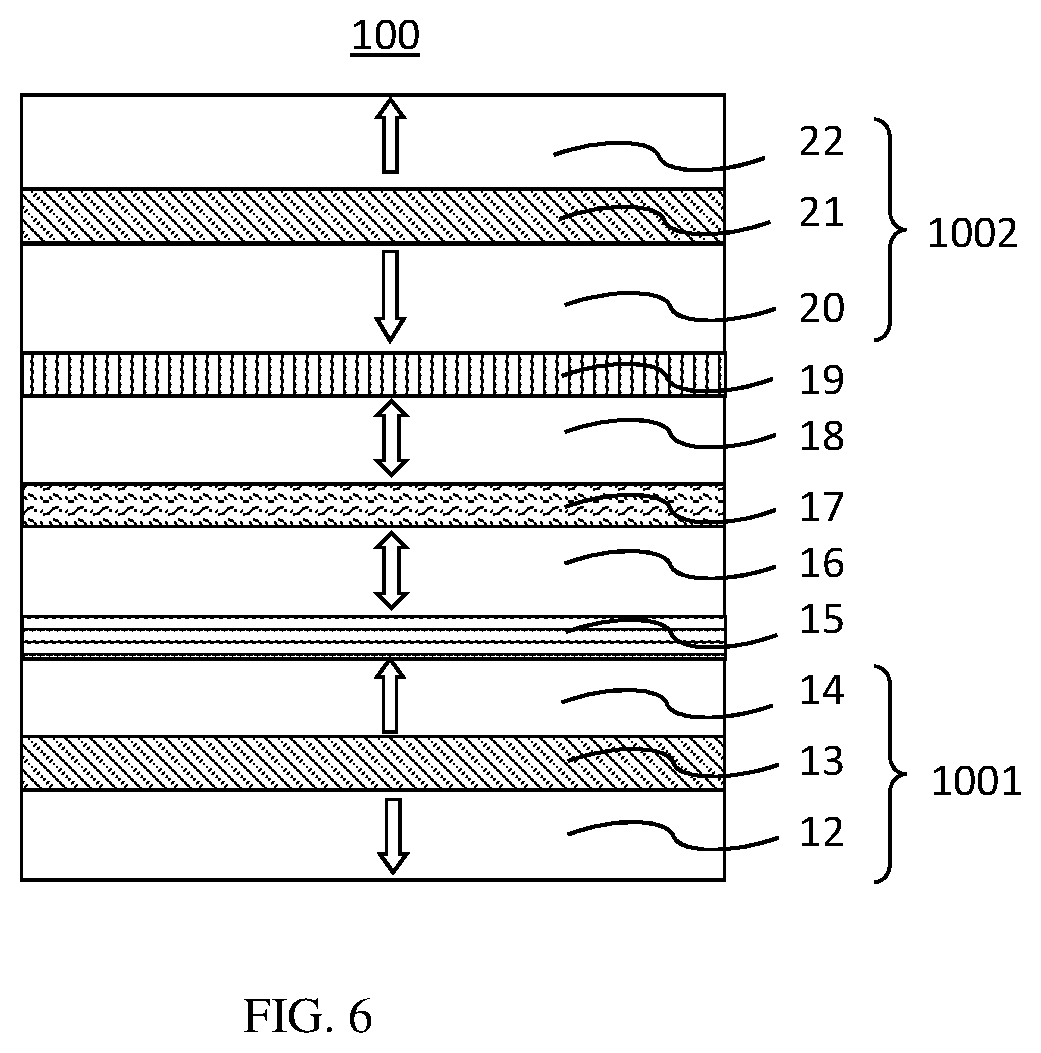Magnetoresistive element having a composite recording structure
- Summary
- Abstract
- Description
- Claims
- Application Information
AI Technical Summary
Benefits of technology
Problems solved by technology
Method used
Image
Examples
first embodiment
of Current Invention
[0038]FIG. 3 is a cross-sectional view showing a configuration of an MTJ element 10 as deposited according to the first embodiment in this invention. The MTJ element 10 is configured by stacking a reference structure 14, a tunnel barrier layer 15, a composite recording structure comprising a first free layer (FL1) 16, a nonmagnetic spacing layer 17 and a second free layer (FL2) 18 and a cap layer 19 in the order from the bottom to the top.
[0039]The FL1 is made of a ferromagnetic material and FL2 is made of a Ni-containing ferromagnetic material. Magnetizations of FL1 (16) and FL2 (18) are parallel-coupled across the nonmagnetic spacing layer 17. Both of the FL1 and FL2 have perpendicular magnetic anisotropies and variable (reversible) magnetization directions. The reference structure has an invariable (fixing) magnetization direction. The reference structure is a synthetic anti-ferromagnetic structure having a perpendicular magnetic anisotropic energy which is su...
second embodiment
of Current Invention
[0043]FIG. 4 is a cross-sectional view showing an example configuration of an MTJ element 20 as deposited according to the second embodiment. The MTJ element 20 is configured by stacking a reference structure 14, a tunnel barrier layer 15, a composite recording structure comprising a first free layer (FL1) 16, a nonmagnetic spacing layer 17, a second free layer (FL2) 18 having a super-lattice structure and a cap layer 19 in the order from the bottom to the top.
[0044]The FL1 is made of a ferromagnetic material and FL2 is made of a Ni-containing ferromagnetic material. Magnetizations of FL1 (16) and FL2 (18) are parallel-coupled across the nonmagnetic spacing layer 17. Both of the FL1 and FL2 have perpendicular magnetic anisotropies and variable (reversible) magnetization directions. The reference structure has an invariable (fixing) magnetization direction. The reference structure is a synthetic anti-ferromagnetic structure having a perpendicular magnetic anisotro...
third embodiment
of Current Invention
[0048]FIG. 5 is a cross-sectional view showing a configuration of an MTJ element 30 as deposited according to the third embodiment. The MTJ element 30 is configured by stacking a reference structure 14, a tunnel barrier layer 15, a recording structure 16 comprising a first free layer (FL1) 16, a nonmagnetic spacing layer 17, an insertion layer 178, a second free layer (FL2) 18 having a super-lattice structure and a cap layer 19 in the order from the bottom to the top.
[0049]The FL1 is made of a ferromagnetic material and FL2 is made of a Ni-containing ferromagnetic material. Magnetizations of FL1 and FL2 are parallel-coupled across the nonmagnetic spacing layer 17. Both of the FL1 and FL2 have perpendicular magnetic anisotropies and variable (reversible) magnetization directions. The reference structure has an invariable (fixing) magnetization direction. The reference structure is a synthetic anti-ferromagnetic structure having a perpendicular magnetic anisotropic...
PUM
 Login to View More
Login to View More Abstract
Description
Claims
Application Information
 Login to View More
Login to View More - R&D
- Intellectual Property
- Life Sciences
- Materials
- Tech Scout
- Unparalleled Data Quality
- Higher Quality Content
- 60% Fewer Hallucinations
Browse by: Latest US Patents, China's latest patents, Technical Efficacy Thesaurus, Application Domain, Technology Topic, Popular Technical Reports.
© 2025 PatSnap. All rights reserved.Legal|Privacy policy|Modern Slavery Act Transparency Statement|Sitemap|About US| Contact US: help@patsnap.com



